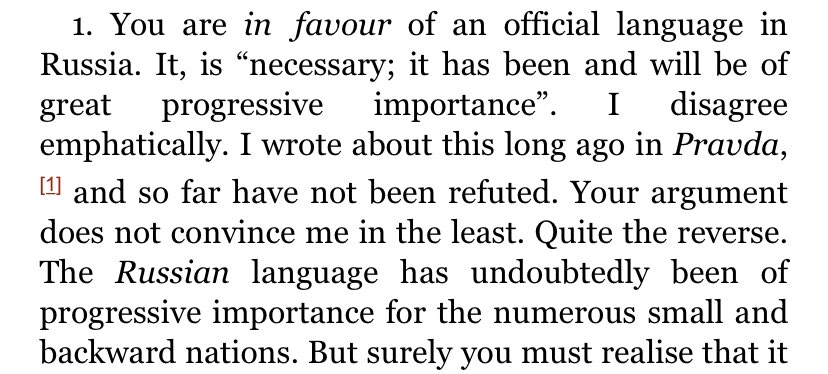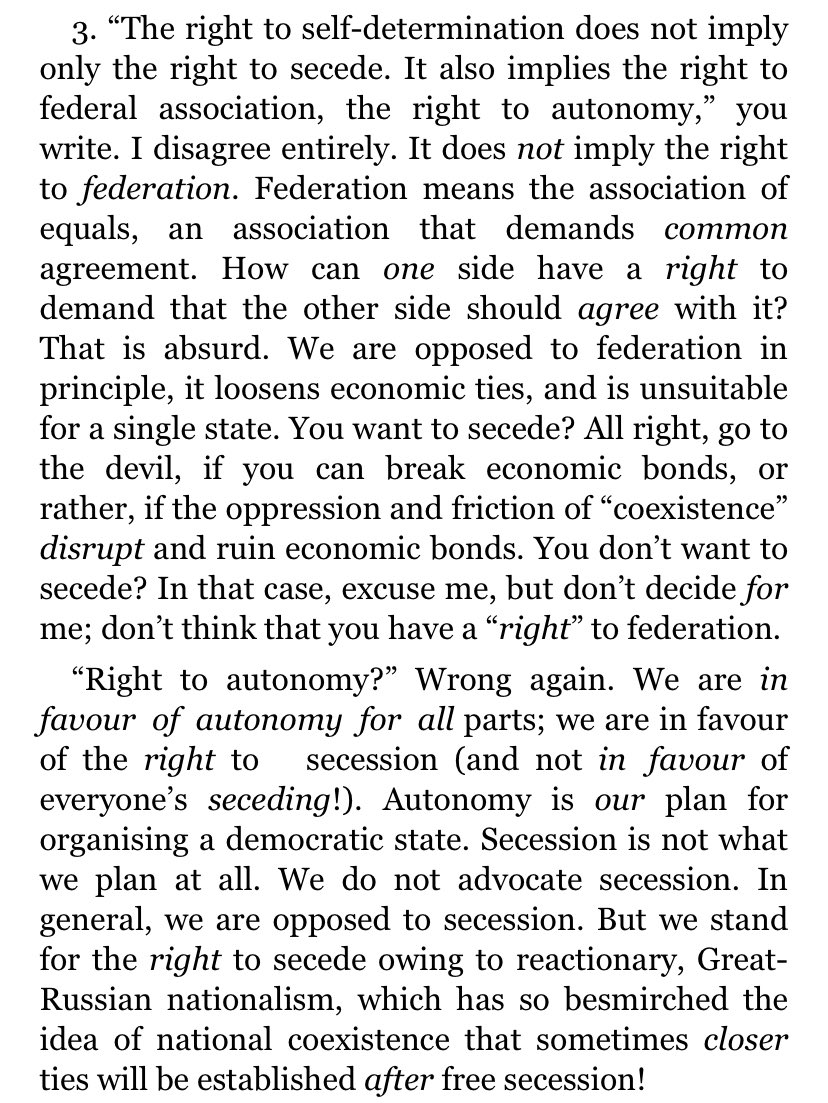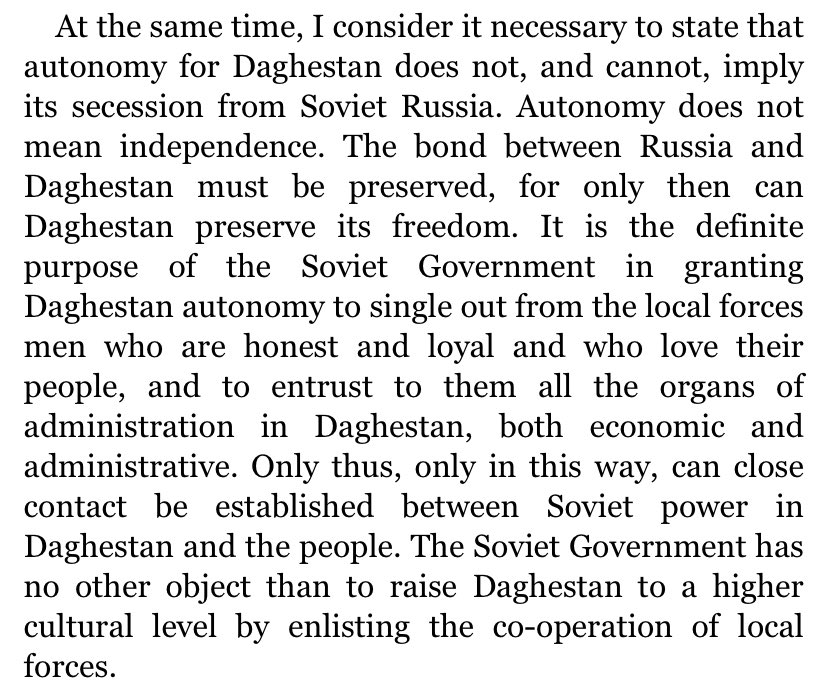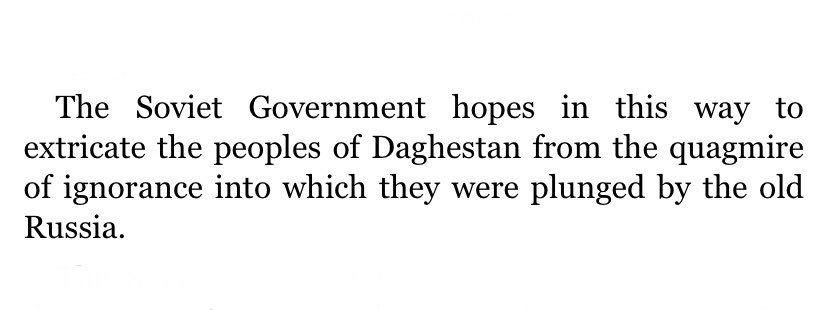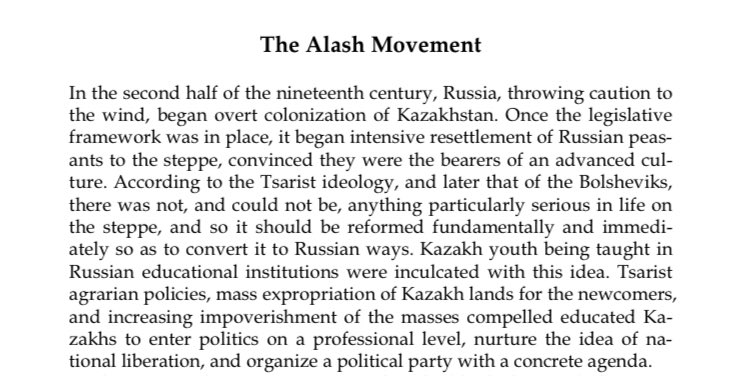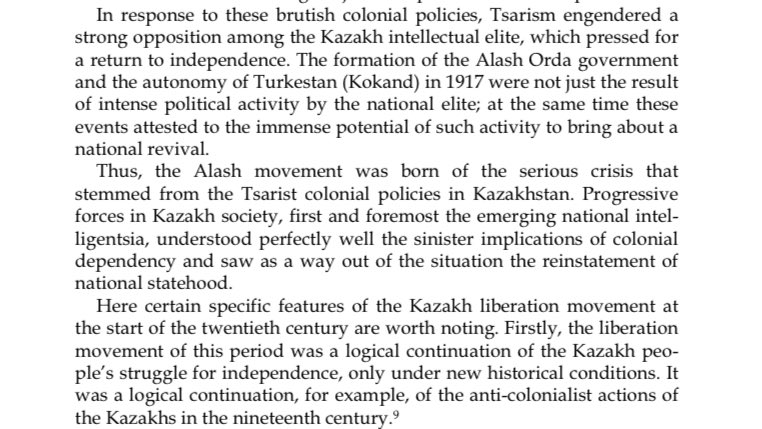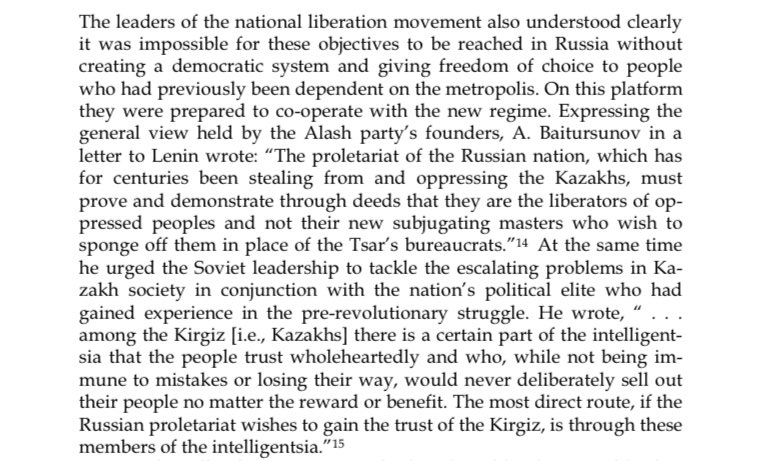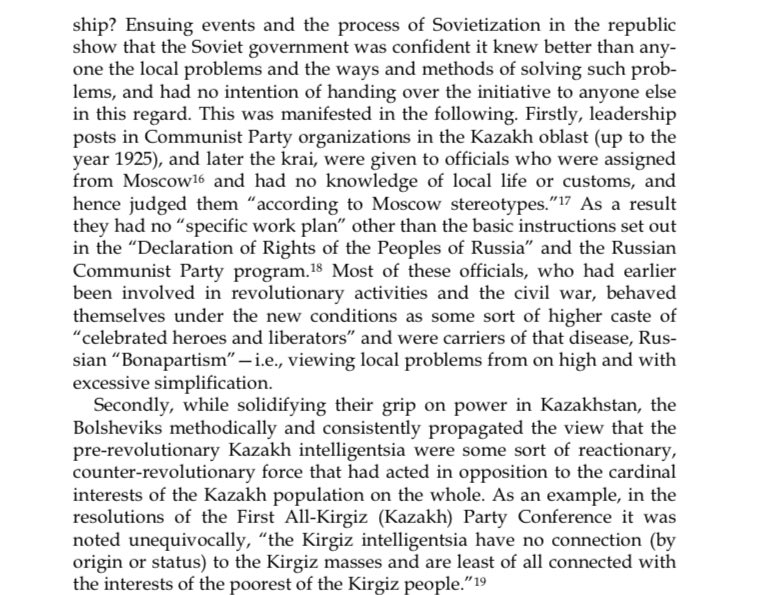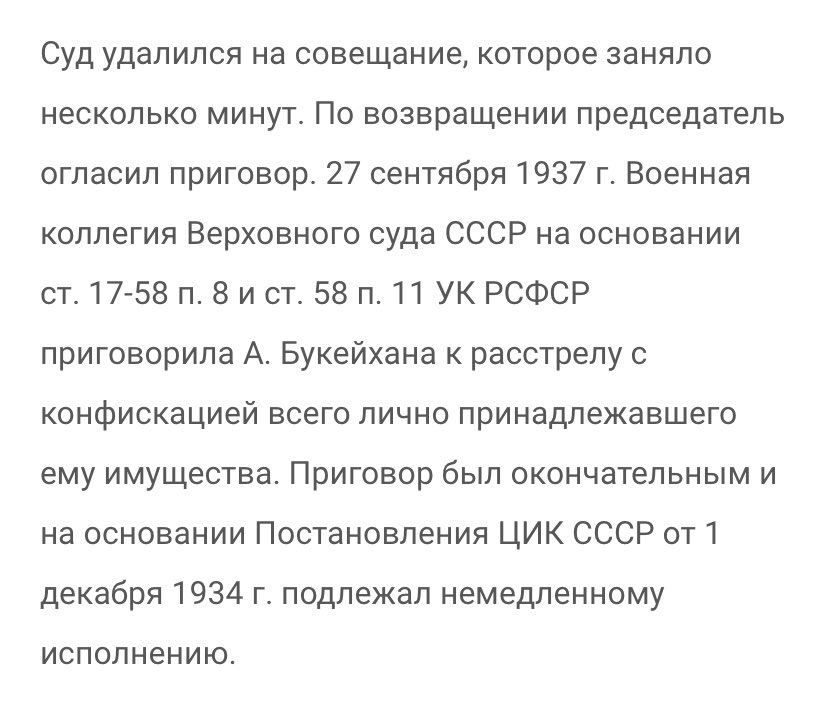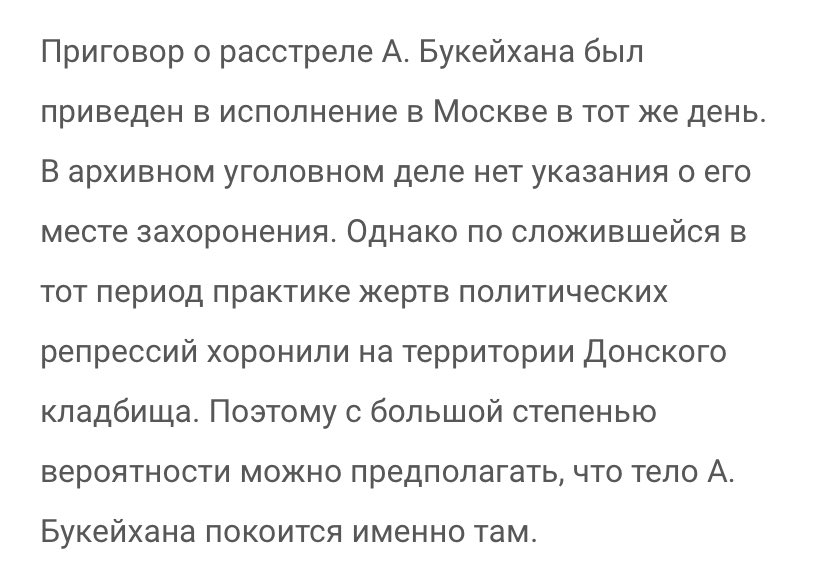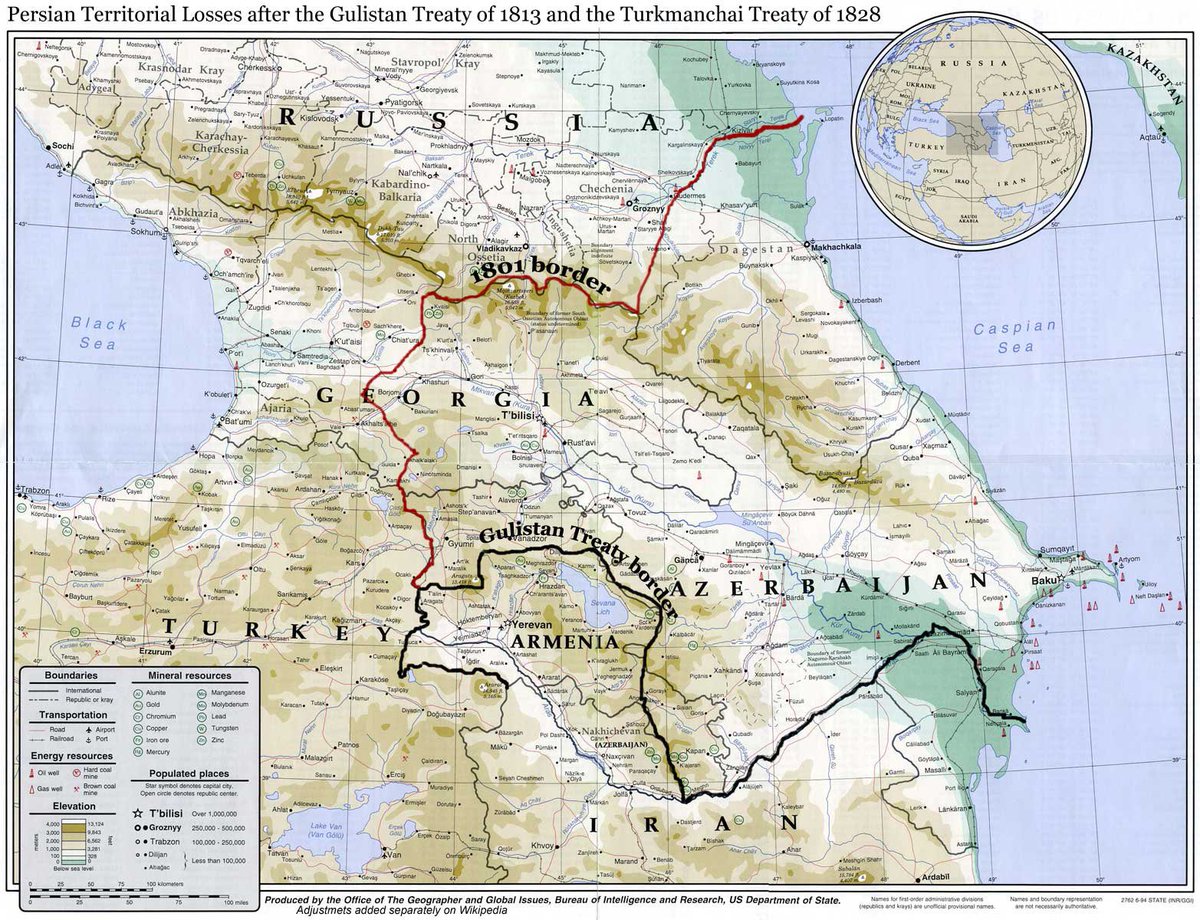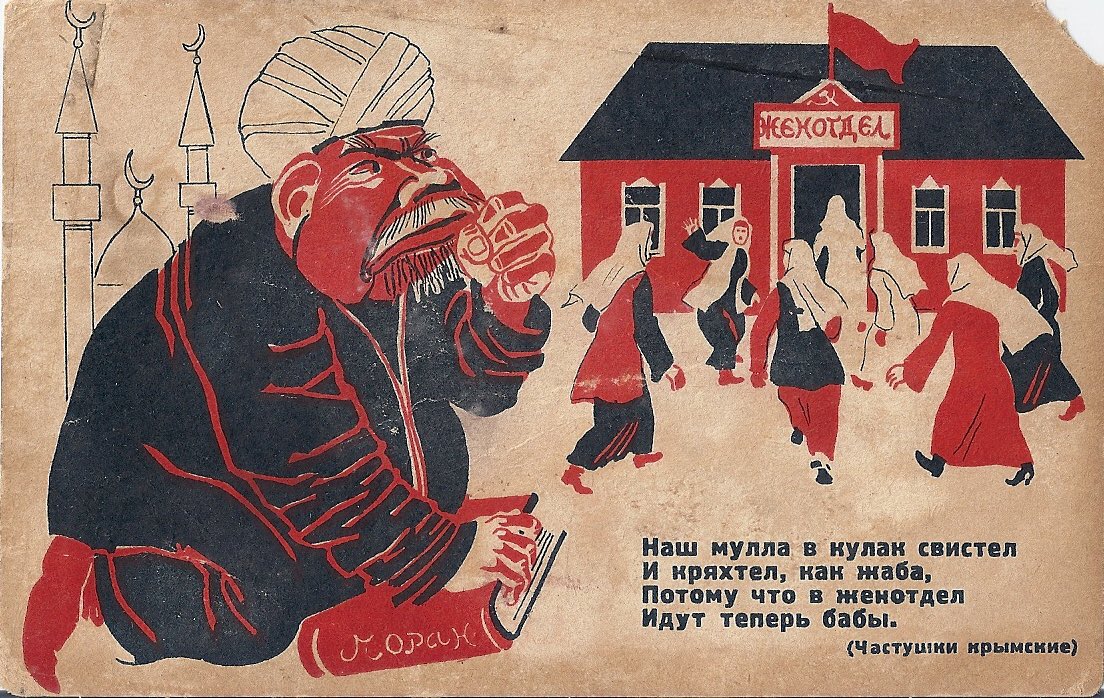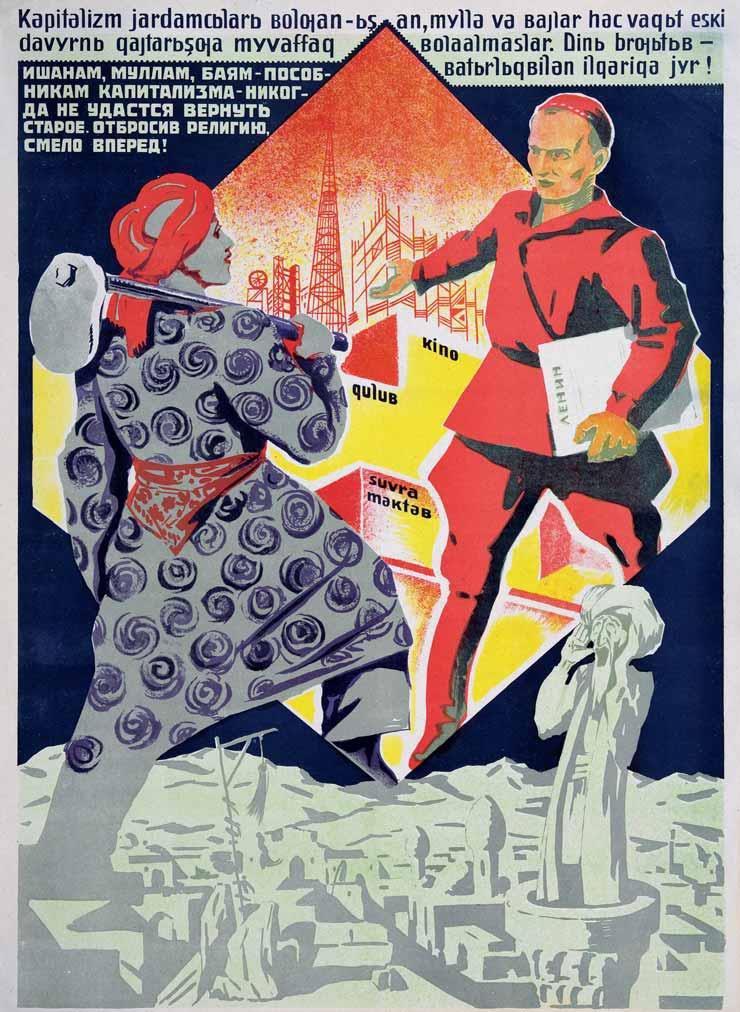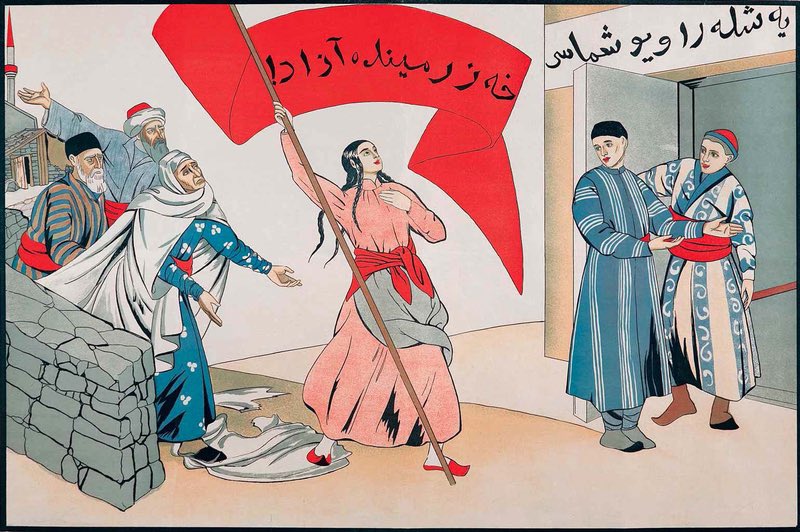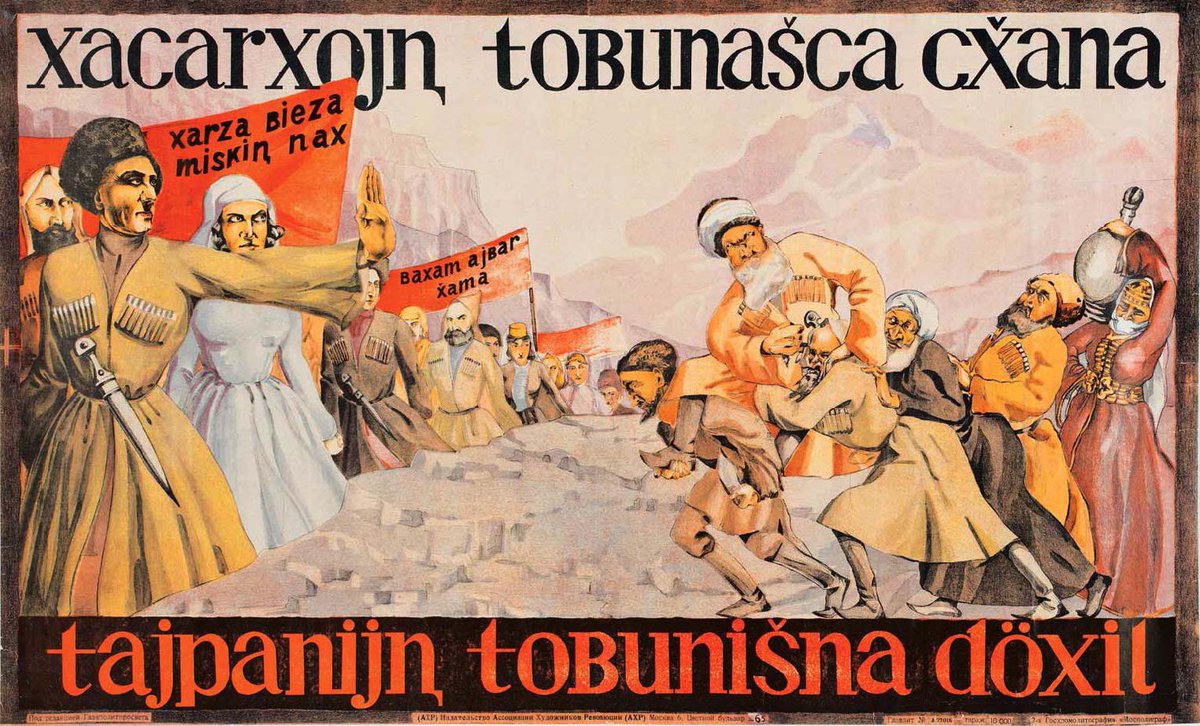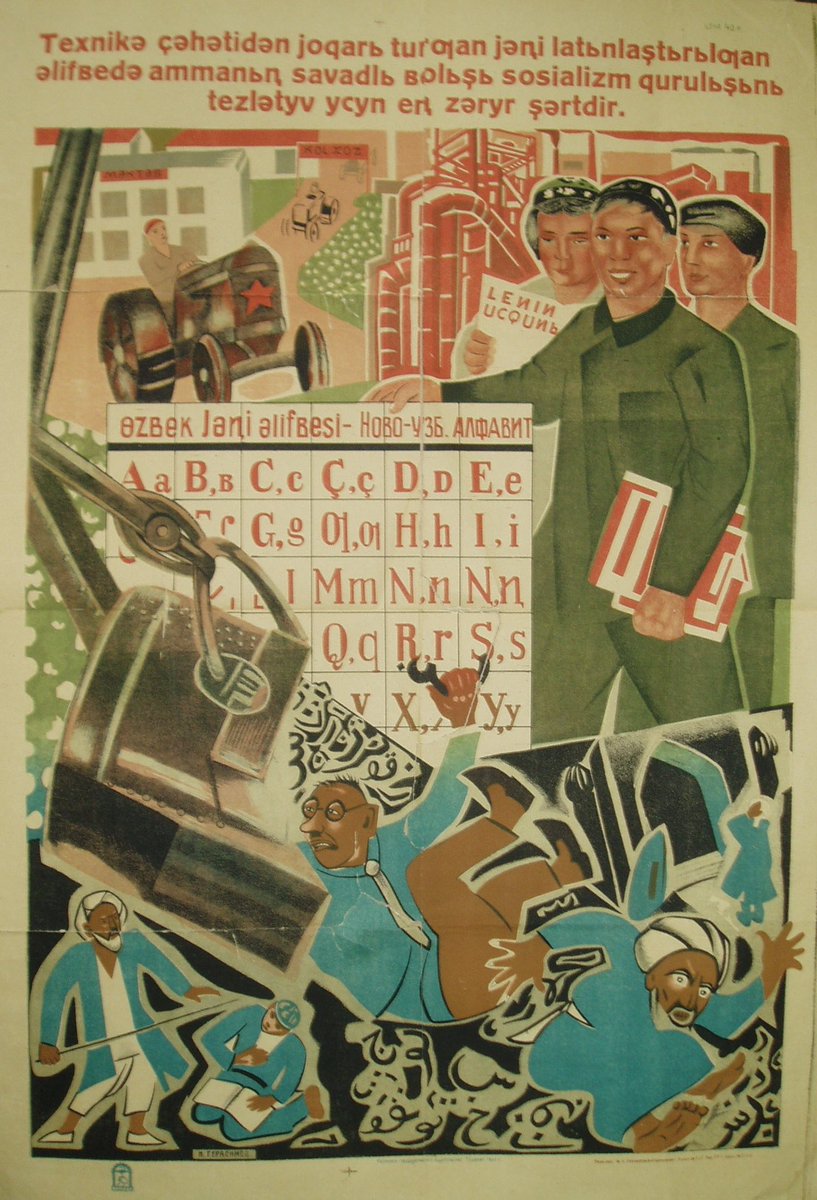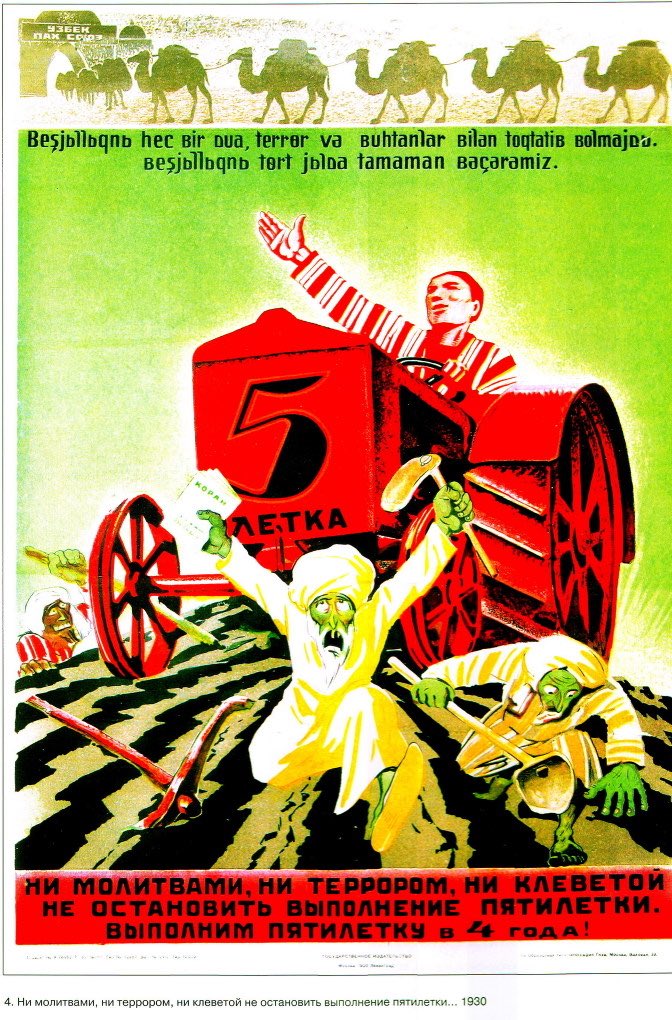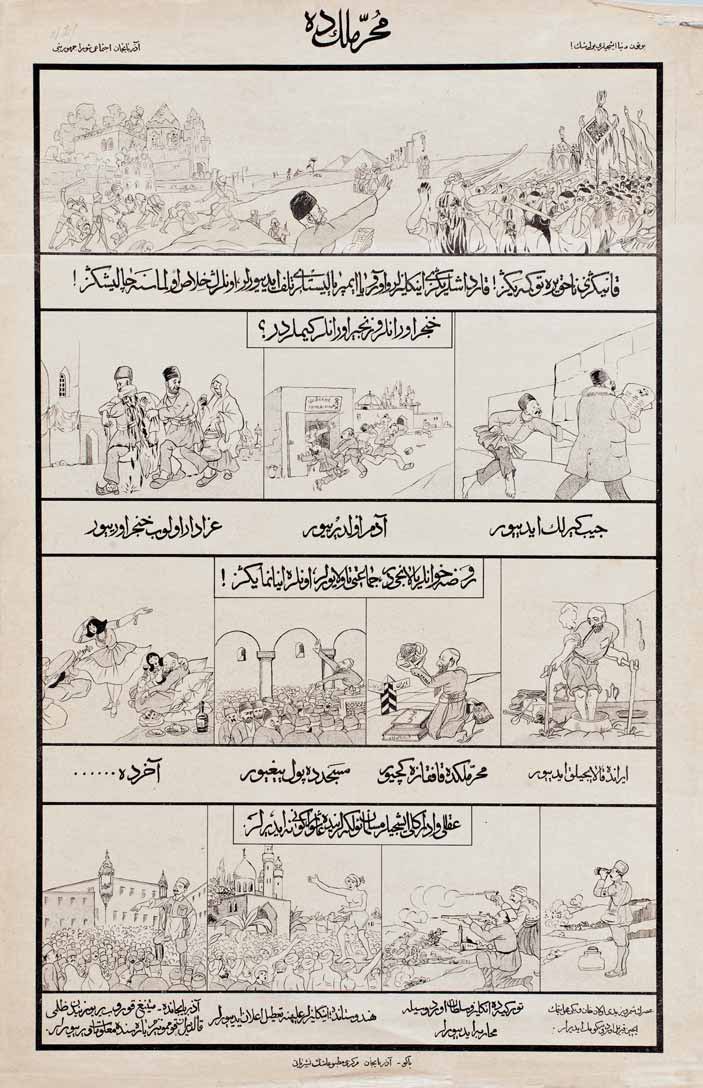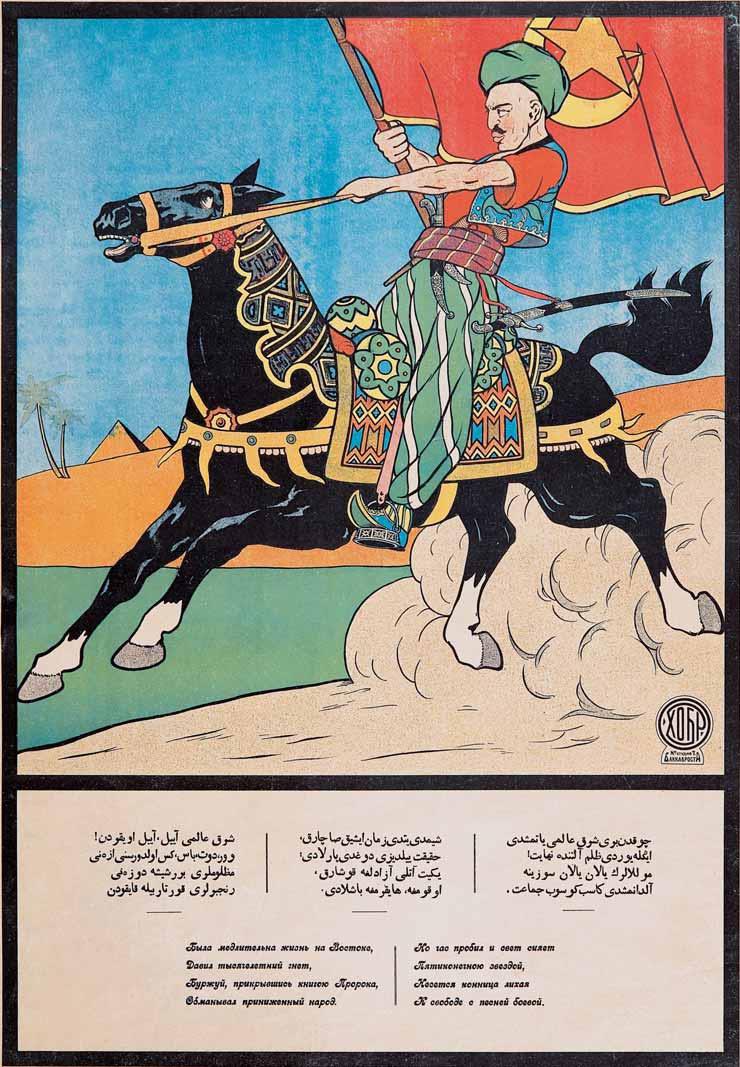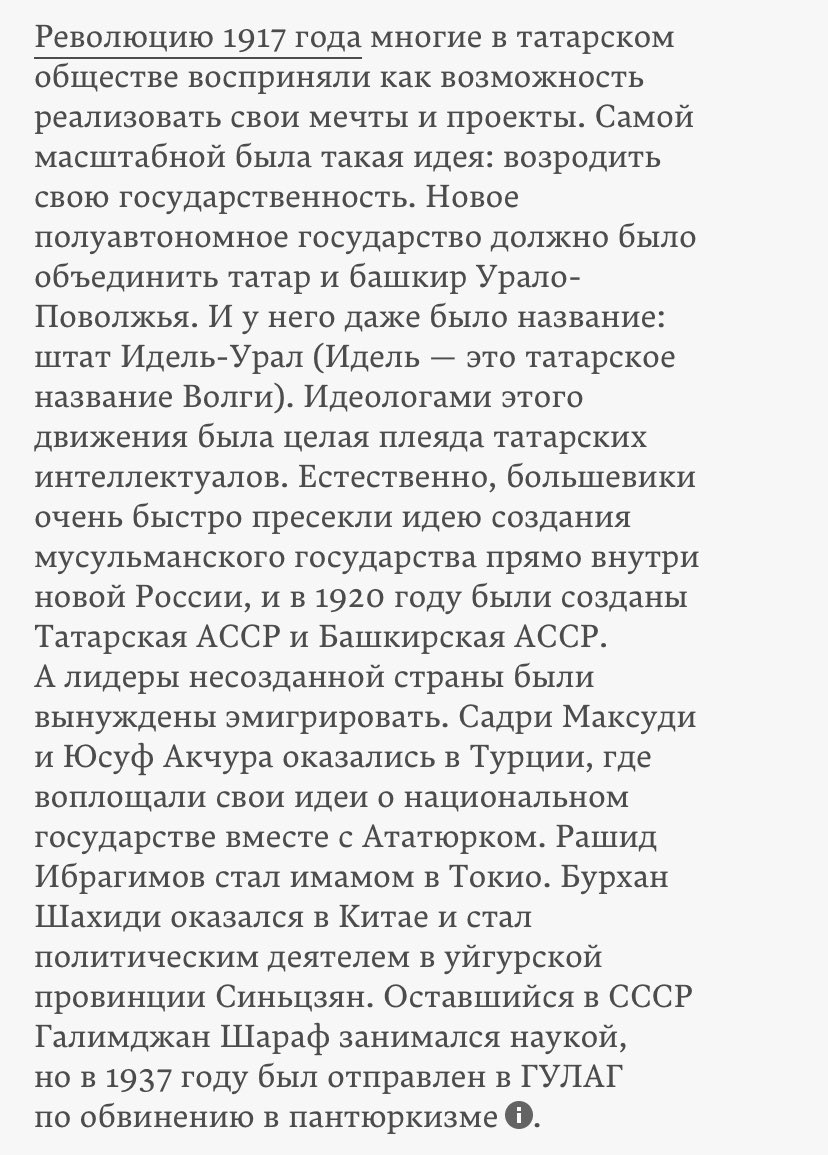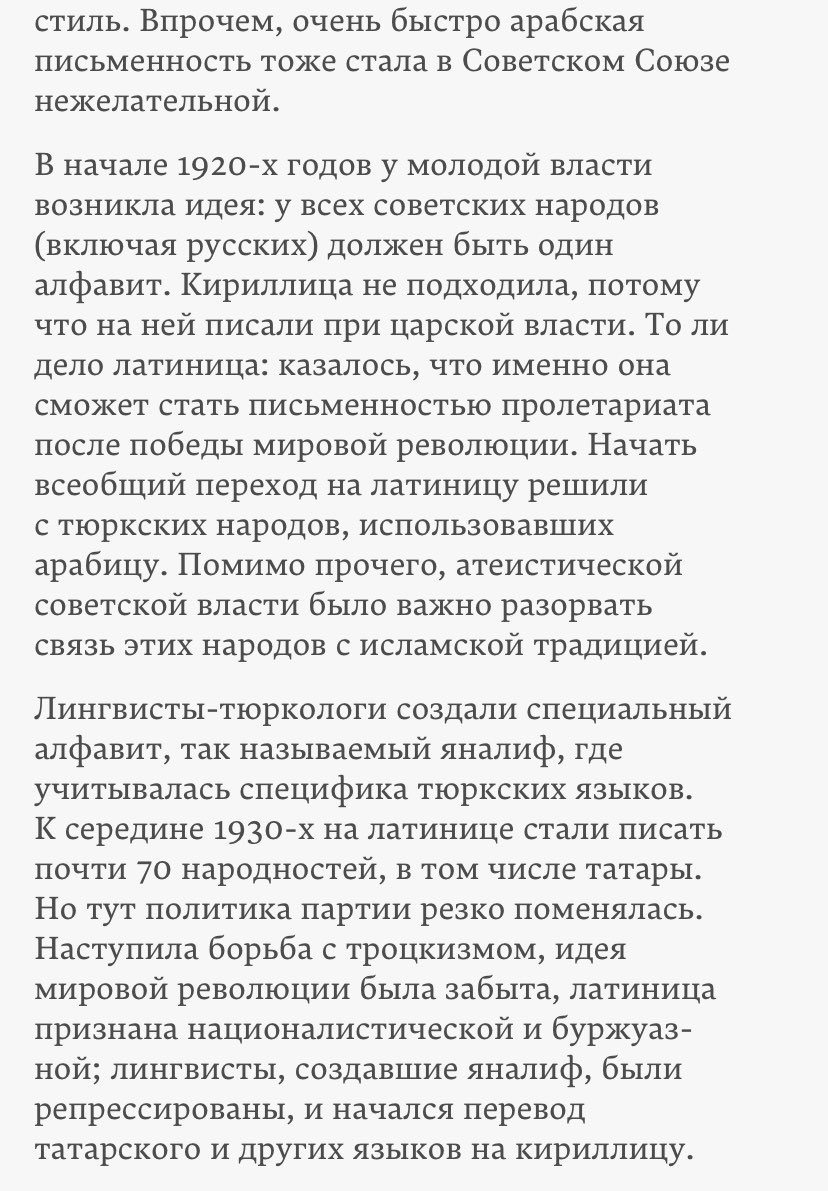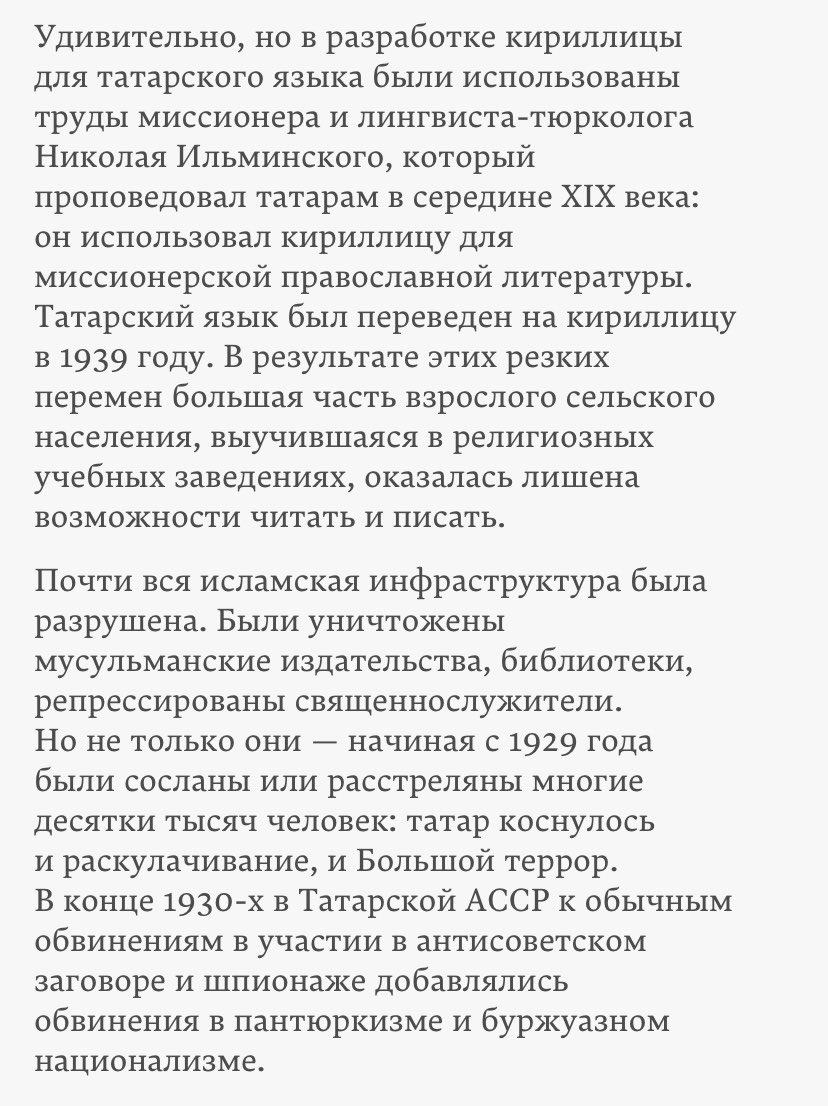thread of instances of the soviet union being imperialist
lenin wrote a letter to armenian revolutionary shahumyan in 1913 saying that ”the russian language has undoubtedly been of progressive importance for the numerous small and backward nations” and that ethnic minorities in the ussr do not have the right to autonomy in practice.
in 1920 at the congress of the peoples of dagestan in temir-khan-shura, stalin said that dagestan could not have independence and secede from russia, as that was the only way for dagestan to be “raised to a higher cultural level” and rescued from “the quagmire of ignorance”.
in that same address stalin spoke about the importance of people being allowed to primarily use their local languages and observe sharia law, promises the bolsheviks did not keep.
he also demanded that the peoples of dagestan increase their agricultural production for the good of the whole soviet union, and in typical imperial fashion the heartland took more than their share of agricultural products from dagestan, leaving little for the locals.
this caused widespread malnutrition, and this vein of resource exploitation combined with neglect of industrial development made dagestan the poorest region in all of russia.
this speech was after the mountainous republic of the north caucasus was formed, in an attempt to finally break away from russia, which was crushed by the bolsheviks in 1921.
the MNRC was made into the mountain assr, and roughly 90 towns in the mountains were obliterated, and 10,000 people were forced to resettle from the mountains to the plains.
kazakh leader alıhan bokeıhanov also formed a kazakh-bashkir state against the soviets during this time, but their uprising was crushed. he and his associates were employed in the soviet government, but moscow believed they were continuing counterrevolutionary activity in secret.
this is a bit of information on the alash movement that explains it better than i could. in short, the bolsheviks believed that they knew what was best for kazakhs more than kazakhs did, despite understanding nothing (in typical imperial fashion).
the majority of the state apparatus of kazakhstan supported him and the alash movement. in 1922 the soviets relocated a number of kazakh intellectuals to major cities and siberia, and bokeıhanov was sent to moscow to limit his influence and isolate him.
however, they believed he kept in contact with ”counterrevolutionaries”, and continued his operations. following the arrests and exile of other members of alash, he was arrested in moscow in 1937 on charges of pan-turkism and anti-soviet terrorist activity.
on september 27, 1937, after a court proceeding less than an hour long, he was announced guilty of these charges and subject to immediate execution. his family was not informed of what had happened to him.
in 1957 during the rehabilitation of victims of the purges, his daughter requested that her father’s case be reopened. the soviet government insisted that no members of alash had faced any punishment, and refused to change his sentence.
they said that as he had continued to fight against the soviets after their occupation of kazakhstan (which they had shown no evidence of), he was a counterrevolutionary and a threat to the soviet government.
his conviction was not overturned until 1989, when they found that there had been no evidence of his guilt presented at the trial, nor were any witnesses questioned. there was no evidence whatsoever of his conducting counterrevolutionary activities after 1920.
for 52 years his name and legacy were disrespected and buried for the crime of wanting autonomy and freedom for his people from their occupiers, and an end to russian settlement on kazakh land.
the peoples of republics of the north caucasus, georgia, azerbaijan, armenia, bukhara, kazakhstan, tajikistan, tatarstan, turkmenistan, estonia, etc all tried to separate from russia and establish independence following the collapse of the russian empire,
but the bolsheviks did not respect their autonomy and instead fought to maintain their imperial territories.
the bolsheviks knew that they had to have azerbaijan and the northeastern caucasus along the coast of the caspian sea under their control because they could not afford to lose access to the oil there, autonomy be damned.
the construction of the first soviet oil well on the caspian was completed in 1925, and the volume of drilling increased by 70 times. in the 30s leading leading up to ww2, the baku-north kavkaz region provided an average of 80% of the soviet union’s oil.
up until 1914 the chechen language used arabic script, before being changed to the latin alphabet in 1925 with strong opposition, then to cyrillic in 1938, combined with use of the russian language (which is still spoken by most chechens today).
this goes directly with what lenin wrote in 1913 about the “progressive importance” of the russian language, implying that this language and system of writing were an important step in “civilizing” these “backwards nations”.
the same thing happened in uzbekistan and tajikistan. use of the cyrillic alphabet and the russian language was enforced, severing turkic and persian ties and increasing their reliance on and connection to russia. (post-soviet uzbekistan has returned to using the latin alphabet)
the soviets repressed communal ethnic identity, particularly by rearranging internal borders several times early on to reduce the possibility of any one ethnic minority gathering to go up against them.
muslim former subjects of the russian empire in the caucasus/central asia were initially promised full religious freedom: the bolsheviks promised “equality and sovereignty for all”, “the right of the peoples of russia to direct their own future”, implying the right to secession,
“the suppression of all restrictions and privileges in the area of religion or nationality”, and “the free development of national minorities and ethnic groups in the russian territory”.
before long, however, all religious freedoms were suppressed. over the course of 20 years, almost all religious institutions of the north caucasus and central asia were destroyed.
in north kavkaz in 1921 there were 4,000 mosques, 10,000 mullahs, and 2,000 koranic schools, but by the end of the 1930s there were only 150 mosques, no koranic schools, and 150 mullahs.
soviet propaganda relied heavily on associating islam with backwardness and counterrevolutionary activity, and by extension, muslims who did not assimilate.
the elimination of the arabic script was an integral part of their attempts to eliminate islam in the soviet union. by replacing it with latin and cyrillic, many religious texts were made inaccessible, and propaganda images reflected the connection between the alphabets & islam.
the tatar language in particular was targeted by the transition from arabic to latin to cyrillic, in order to disconnect tatars from islamic tradition. their literature, music, and overall culture were separated from islam, studied shallowly & only in comparison to russian works.
when the tatar language was suddenly changed to cyrillic in 1939, many rural adults who had studied in religious schools under different alphabets became illiterate, and islamic libraries and publishing houses were destroyed.
to implement collectivization, economists from moscow were dispatched to dagestan in 1928, their pilot region for the project. of the land that was to be redistributed, there were roughly 170,000 hectares of land in the plains and only 87,000 in the mountains,
so the soviets forced people to resettle on collective farms on the plains. settlement building was slow and underfunded, and many of the relocated families were left without adequate housing or drinkable water.
the land flooded regularly, and shortages of livestock and equipment were common, as well as widespread occurrence of malaria.
part of the reasoning for this kind of radical reshaping of the local society was because the soviets saw dagestan’s state as “hopeless backwardness” caused by the tsarist regime, including living in the mountains and under the governance of djamaat,
when these things were really cultural traits of dagestani peoples that had survived tsarist repression. the soviets just saw it as unproductive and purposeless.
in this way, the soviets were merely continuing russia’s imperial legacy of forced assimilation. the soviets also knew from the caucasus wars that kavkazi people were harder to subdue in a fight in the mountains, and forcing people out of their homeland made them more vulnerable.
in the mid-1920s, bolshevik forces began to systematically disarm men in the north caucasus and central asia. in 1929, representatives of the central committee arrived in the auls of chechnya and began to confiscate property from peasants who were deemed to be kulaks
(whether they actually were or not) before arresting and deporting them and their families.
stalin’s infamous 1930 article “dizzy with success” stated that any peasant who wished to leave the collective would be allowed to do so, and in chechnya, fighters in the mountains were promised amnesties if they laid down their arms.
these people were then hit with a wave of arrests; an estimated 35,000 chechens were seized and an unknown number of people from other kavkazi ethnic groups. after show trials, the detained people were either shot, imprisoned, or exiled.
grain requisitioning to feed russians in the heartland caused the famine of 1932-33 that swept the grain producing regions of the caucasus, central asia, and ukraine, resulting in the deaths of 3.9 million ukrainians, 2-3 million in the north caucasus, and 2 million kazakhs,
40% of their population. this was an act of genocide that reduced kazakhstan’s population of ethnic kazakhs from 60% to 38%, allowing increased russian settlement on their lands.
people dying of starvation attempting to flee their towns in kazakhstan and ukraine were forced to stay in place, as most did not have internal passports and could not travel without one, so they were left to d!e.
until perestroika, the famines were officially denied as “anti-soviet propaganda”, and archival evidence was buried by the government.
stripping an occupied land of resources for the benefit of the state at the expense of the local population is a textbook tool of imperial power.
in an article published in pravda on august 21, 1936, entitled “turn the enemies of socialism to dust”, lavrentiy beria said, “and so the pitiful fragments of the defeated enemies of socialism are now trying to direct all their blows, first of all, against the party of lenin —
against stalin, against its leadership; in its heart, taking the path of the most heinous, most vile means and methods in their black, treacherous and subversive work”.
this article began a wave of indiscriminate violence and repression in the caucasus and central asia later that year. nkvd order 00447, "about repression of former kulaks, criminals, and other anti-soviet elements", was approved on july 30, 1937.
“kulaks and anti-soviet elements” included muslim clergy and any members of non-russian ethnic groups who could easily be accused of being part of a terrorist group, real or not. many tatars who had not assimilated were charged with pan-turkism and k!lled.
an article was published in pravda on september 24 concerning the ‘putrid situation in the dagestan obkom’, and just two days after hearing the news, samurskiy requested that the quota for first category arrests (those to be tried and immediately shot) be doubled.
he also requested that second category arrests (gulag internments) be raised & later increased the execution quota a second time. these higher quotas made it easy for officials to use the order to abuse their power/carry out personal vendettas in the name of defense of the state.
while the numbers may be comparatively modest when looking at numbers of other regions, it had been happening since the 20s, long before the purges officially began. between 1924-27, north kavkaz accounted for roughly half of extrajudicial executions across the whole of the ussr.
regional troikas, such as those in kyrgyzstan, would even have competitions for who could have more people arrested and executed, or for who could fill their quotas faster. there was little genuine concern for the allegations, they treated peoples lives like a game.
sometimes the quotas were raised retroactively to legitimize the high numbers of people who had already been arrested or executed, such as in the east siberia and krasnoyarsk regions (also imperial territory).
nkvd leadership in turkmenistan were found to have dispatched arrest squads to the streets searching for people who “looked suspicious” just to fulfill their quotas.
many of the executions during this period were artists and authors, as well as people baselessly reported for petty reasons. they were charged with being “fifth columnists” or active wreckers of the soviet system; they were k!lled for being “unreliable” ethnicities.
people all across the ussr were purged on false accusations of being criminals or counterrevolutionaries, but in the republics with non-russian majorities, these allegations almost always centred around people of their ethnicity or race being inherently disloyal to the soviets.
this included kurds and iranians in azerbaijan, who were also deported to central asia.
in 1937, famous georgian musician evgeni miqeladze was brutally tortured and interrogated for 48 days by beria merely because he had married the daughter of a georgian bolshevik who had fallen victim to purges earlier that year.
his eyes were removed and his own baton was driven through his head, and he was later shot by the troika.
any and all dissent among ethnic minorities (“anti-soviet elements”) was met with violent repression, just as it had been under the russian empire to keep people in submission.
mass deportations of chechens began after the purges in 1944. by the end of february, 478,479 people had been evicted and put on railway cars, including 91,250 ingush.
in july of 1944, beria reported to the kremlin that “in february and march of that year, 602,193 residents of the north caucasus were moved to the kazakh and kyrgrz ssr’s, including 496,460 chechens and ingush, 68,327 karachai, and 37,406 balkars”.
proportionately to their population, chechens suffered the highest loss of any group affected by stalin’s population transfers. the death toll is estimated to be between 170,000 and 200,000 people, a quarter/nearly a third of their total population.
the soviets’ primary reason for these deportations were their baseless suspicions that the chechen people had collaborated with nazi germany, solidifying the implication that kavkazi peoples were “unreliable ethnicities” as long as they were not in total submission to russia.
additionally, that same year the entirety of the crimean tatar people were accused of collaboration, and 200,000 people were deported to uzbekistan with less than an hours warning. many d!ed on the journey.
many people list bolsheviks and members of the government/nkvd who were kavkazi, tajik, buryat, etc as proof that the soviets did not discriminate based on race at all. however, the deliberate creation of “role models” of a sort for each ethnic group was a tool used to
help ensure loyalty to the soviets and to “prove” that the revolution was a properly inclusive affair. when this was unsuccessful, these “role models” or “revolutionary heroes” were written out of the equation as they could no longer serve their purpose.
beria himself was georgian, and yet he was responsible for some of the most violent repression in the north caucasus, including the chechen deportations, with stalin even introducing him to roosevelt as “our himmler”.
the first edition of the great soviet encyclopedia described with admiration kavkazi peoples’ fight against tsarism, and called imam shamil “the remarkable leader of the mountain people”, describing him as brilliant both in his fighting and his social and political reforms.
after the purges and much anti-soviet resistance in the north caucasus, the 1944 edition only mentioned chechens in a piece about muridism, which it says was the work of british agents, and that shamil was a british secret service agent.
one year later, the long history of kavkazi struggle against russia was denounced as an “ultra-reactionary current of militant islam” at a conference of soviet academics called “the historical essence of caucasian muridism”.
this kind of historical revision sought to delegitimize people’s struggle against the government and make them out as counterrevolutionary criminals, rather than people fighting for their freedom from an oppressive imperial power,
and was used to justify the violence enacted against them by the state.

 Read on Twitter
Read on Twitter